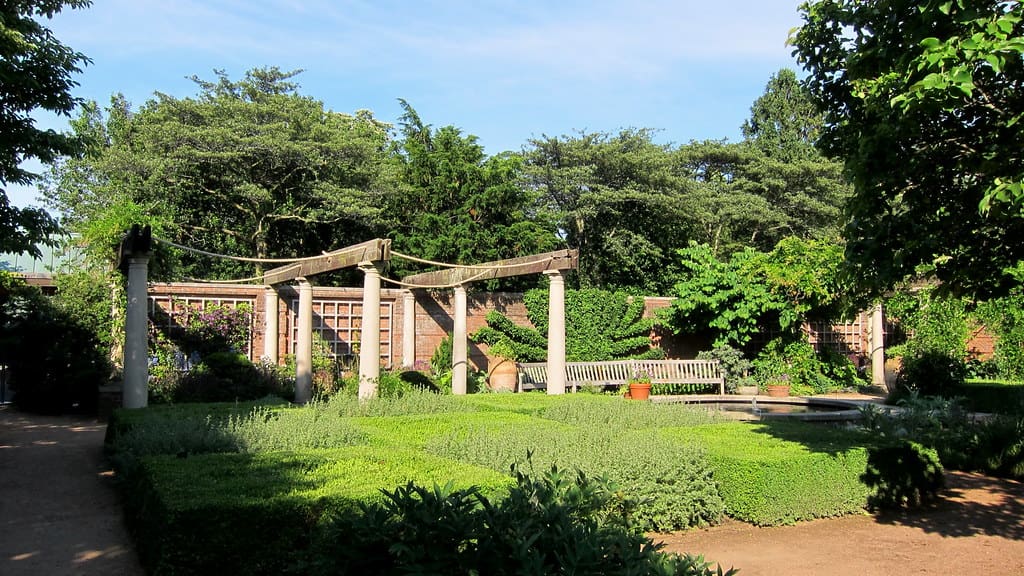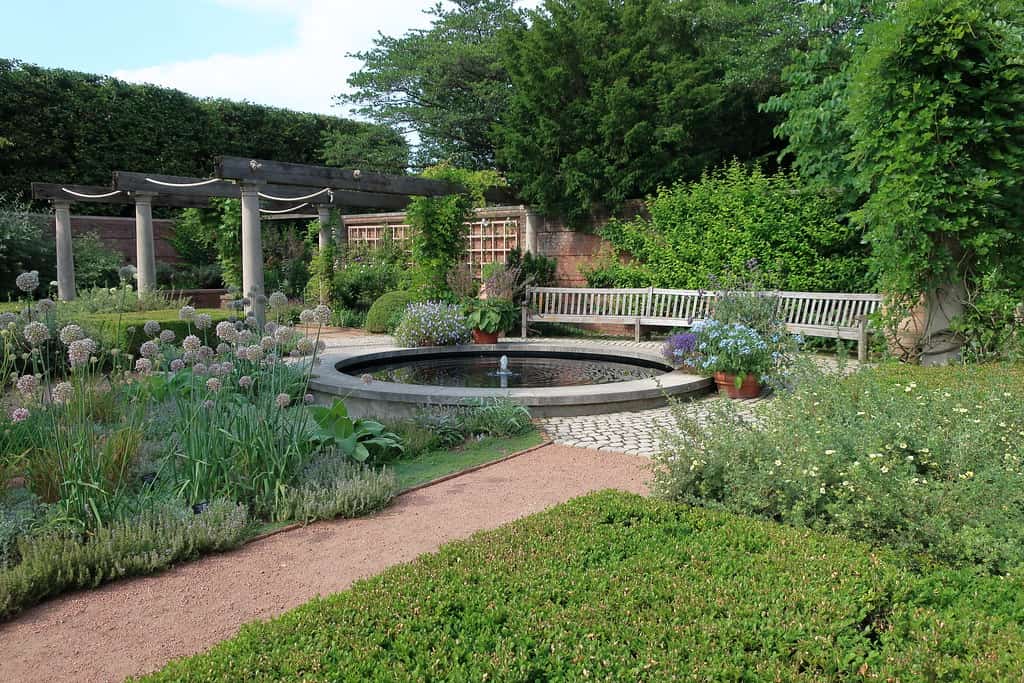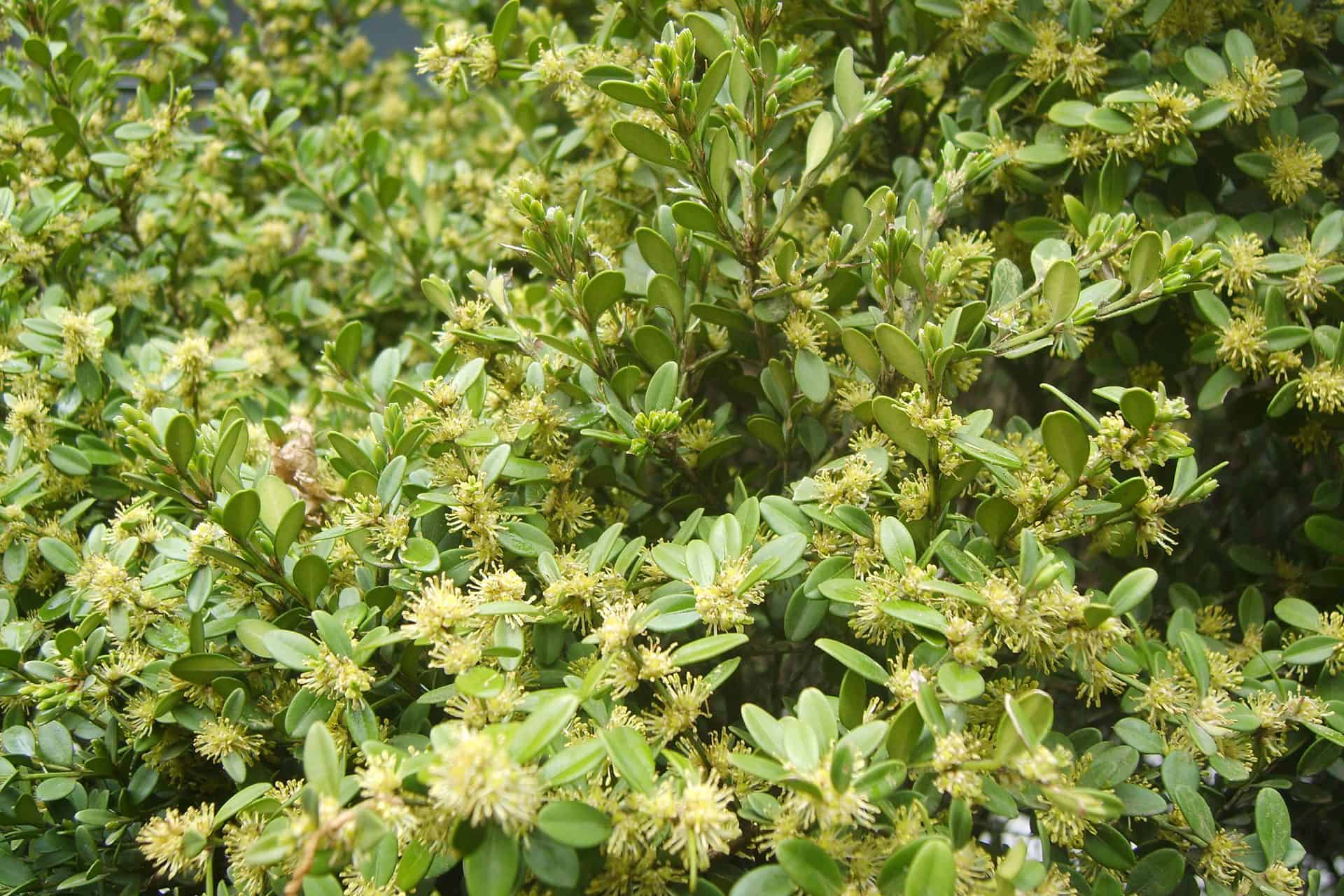No products in the cart.
With the green velvet boxwood, you can add excitement and beauty to your landscape. It is a dream come true for any urban yard to sculpt to your heart’s content. In addition, the evergreen shrub is pollution tolerant and even deer-resistant.
Hence, it is ideal for small landscaping and displays in a vibrant light green foliage color year-round, darkening with age. Whether a beginner or professional, you will love this evergreen shrub year-round.
More About Green Velvet Boxwood Shrub
The Green Velvet Boxwood has petite while smooth foliage. There are no prickly needles; even when left un-trimmed, it grows with a rounded shape.
But when you trim it, the foliage retains that shape for a long time. Another highlight is that in some growing zones, the leaves remain green. Still, in other parts, the foliage starts to get winter bronzing, changing color.
The botanical name for the Green Velvet Boxwood is Buxus x Green Velvet or Buxus green velvet. This outdoor plant belongs to the Buxaceae family and provides color year-round in the garden. The shrub can grow up to four feet tall and wide.
The other benefit is that you can place this Boxwood in different container sizes on the patio or at an entranceway. Furthermore, as they age, the young plants will display green to yellow flowers but are prized for the light to pale green foliage.
Green Velvet Boxwood Care

Being an evergreen shrub, the color display is fabulous throughout the year. Yet the prime time for the Green Velvet Boxwoods is spring, summer, fall, and winter. Once your Velvet Boxwoods become established, it is a hardy plant that can tolerate different elements outdoors.
You can grow them to form low hedges and add wildlife value to any garden when left untrimmed or trimmed.
The Best Soil For This Evergreen Shrub
You must agree the velvety deep green foliage looks fabulous! But in what soil will the Buxus green velvet grow best? The evergreen shrubs adapt to loam, sand, clay, and chalk soil.
The plant prefers the ground to be neutral, with some alkaline and acidic.
The important thing is that it needs well-drained soil to prevent root rot, whether grown in the ground or in a container. You can add some mulch around the base when grown in the ground to retain moisture.
Suitable Light For Green Velvet Boxwood

These small trees need full sun to part shade to thrive. With some direct sunlight in the morning and partial shade in the afternoon, it will create those dark green leaves you will love year-round, whether grown as a hedge or in a pot.
Water Deeply For The Best Results
The Green Velvet Boxwood can handle some dry periods but prefer moist soil with the sun in the morning and shade in the afternoon. Hence, it helps to water deeply and allow the soil to dry between watering.
You may find you will need to water more during the hot season. Still, this plant’s best characteristics are providing your leafy friend with well-draining soil and using the thumb test to check the moisture.
Temperature & Humidity

The best hardiness zones to grow your shrub are 6b to 8b, while the ideal climate zone is between 2 and 24. Regarding temperatures, some dappled sunlight is best for the roots to remain cool.
Another essential thing to allow for the best growth is to prevent too much digging around the shallow roots. Still, if you live in growing zone 5, you may find the tips of the leaves in late winter dying back from the cold, and they turn brown.
If you live in freezing temperatures, it helps to wrap your trees with some burlap to keep them protected to remove in early spring after the last frost.
Fertilizing Green Velvet Boxwood
You can use an all-purpose fertilizer on your Green Velvet Boxwood in spring to encourage new development.
Pruning Buxus Green Velvet Boxwoods
The Green Velvet Boxwood is known to tolerate some hard pruning, and you can form them into different shapes. Still, the only time it needs to be pruned is to remove dead branches or those twisted from the winter winds.
But we recommend not pruning in late fall as it can result in winter sun causing winter bronzing. Another benefit of pruning your Buxus green velvet is providing air circulation to prevent pests and diseases from making the shrub their home.
Propagation of Green Velvet Boxwoods
The best way to grow Buxus green velvet is to root it from a stem cutting in mid-summer.
Take a clean pair of pruners to cut a four-inch long cutting-off stem tip from the new growth. Next, remove the lower leaves and scrape the cut ends bark.
Fill a container with peat moss, vermiculite, and sand and moisten.
Place your cutting into the potting mix, cover it with a plastic bag, and set it in a sunny location.
Check the moisture daily and wet as needed, and check the roots every few days to see if it is established.
When it has an established root system, you can remove the cover and transplant it into another pot with rich potting mix to grow to plant outside in spring.
Another method is to plant Velvet Boxwood seeds, but it is time-consuming. Instead, you can fill containers with organic mix and ensure enough drainage. But first, place the seed in a wet paper towel in the refrigerator for a month.
Ensure that the paper towel remains damp and, after a month, move the seeds to a warmer spot keeping the paper towel moist. Once the seeds germinate, sow them in the potting mix and wrap the container with a plastic cover.
Please keep them in a sunny spot and moist. Once you notice new foliage, you can remove the cover and care for them as usual.
Green Velvet Boxwood Similar Plants
You can find many types of Boxwoods to grow in the garden. These plants make great yard additions to give it color year-round.
Korean Boxwood

The Korean Boxwood is a broadleaf evergreen shrub with upright growth to about 2 feet tall. As the plants mature, they form an open branch structure with dense growth. During the summer, the leaves display dark green and turn to bronze in winter.
In spring, you see a display of cream blossoms attracting bees, followed by capsules in fall.
English Boxwood

It is another shallow root multi-stemmed shrub with small, round, glossy dark green leaves. When it flowers, it is not as spectacular as the foliage and has compact, dense growth. The main concern with English Boxwood is that it is not resistant to the Boxwood blight situation.
These individual plants indoors are highly susceptible to it. So, if you decide to grow English Boxwood, we recommend considering this.
Green Velvet Boxwood Shrub Common Diseases And Pests
The main concern is bronzing in the leaves, turning yellowish or reddish brown. It results from the winter sun and winds. To remedy the problem, it helps to spray an anti-desiccant in late fall or at the end of winter.
Frequently Asked Questions
You can grow the Buxus green velvet as a hedge or in a container to reach up to four feet tall.
The Green Velvet Boxwood is a slow grower and is suitable for small gardens to add visual appearance year long. The foliage retains its color, adding an accent to any landscape.
The Boxwood is classified as a shrub to grow as hedges, but you can train it as a tree.
You can find the Green Velvet Boxwood at a local nursery, or you can get one from Plantly. So you can order your Boxwood online to have it delivered to your home. The best part is they make for excellent companion plants to protect your fruit trees.
Whether you want to buy, sell, or simply reach out to other plant enthusiasts, Plantly is the right place to be!


